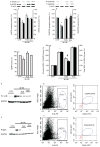Chronic inhibition of endoplasmic reticulum stress and inflammation prevents ischaemia-induced vascular pathology in type II diabetic mice
- PMID: 22081301
- PMCID: PMC3915506
- DOI: 10.1002/path.3960
Chronic inhibition of endoplasmic reticulum stress and inflammation prevents ischaemia-induced vascular pathology in type II diabetic mice
Abstract
Endoplasmic reticulum (ER) stress and inflammation are important mechanisms that underlie many of the serious consequences of type II diabetes. However, the role of ER stress and inflammation in impaired ischaemia-induced neovascularization in type II diabetes is unknown. We studied ischaemia-induced neovascularization in the hind-limb of 4-week-old db - /db- mice and their controls treated with or without the ER stress inhibitor (tauroursodeoxycholic acid, TUDCA, 150 mg/kg per day) and interleukin-1 receptor antagonist (anakinra, 0.5 µg/mouse per day) for 4 weeks. Blood pressure was similar in all groups of mice. Blood glucose, insulin levels, and body weight were reduced in db - /db- mice treated with TUDCA. Increased cholesterol and reduced adiponectin in db - /db- mice were restored by TUDCA and anakinra treatment. ER stress and inflammation in the ischaemic hind-limb in db - /db- mice were attenuated by TUDCA and anakinra treatment. Ischaemia-induced neovascularization and blood flow recovery were significantly reduced in db - /db- mice compared to control. Interestingly, neovascularization and blood flow recovery were restored in db - /db- mice treated with TUDCA or anakinra compared to non-treated db - /db- mice. TUDCA and anakinra enhanced eNOS-cGMP, VEGFR2, and reduced ERK1/2 MAP-kinase signalling, while endothelial progenitor cell number was similar in all groups of mice. Our findings demonstrate that the inhibition of ER stress and inflammation prevents impaired ischaemia-induced neovascularization in type II diabetic mice. Thus, ER stress and inflammation could be potential targets for a novel therapeutic approach to prevent impaired ischaemia-induced vascular pathology in type II diabetes.
Copyright © 2012 Pathological Society of Great Britain and Ireland. Published by John Wiley & Sons, Ltd.
Conflict of interest statement
No conflicts of interest were declared.
Figures






References
-
- Harding HP, Ron D. Endoplasmic reticulum stress and the development of diabetes: a review. Diabetes. 2002;51(Suppl 3):S455–S461. - PubMed
-
- Mannava K, Money SR. Current management of peripheral arterial occlusive disease: a review of pharmacologic agents and other interventions. Am J Cardiovasc Drugs. 2007;7:59–66. - PubMed
-
- Cooke JP. NO and angiogenesis. Atheroscler Suppl. 2003;4:53–60. - PubMed
-
- Bernardini G, Ribatti D, Spinetti G, et al. Analysis of the role of chemokines in angiogenesis. J Immunol Methods. 2003;273:83–101. - PubMed
-
- Morbidelli L, Donnini S, Ziche M. Role of nitric oxide in the modulation of angiogenesis. Curr Pharm Des. 2003;9:521–530. - PubMed
Publication types
MeSH terms
Substances
Grants and funding
LinkOut - more resources
Full Text Sources
Molecular Biology Databases
Miscellaneous

